Welcome to “100 Flowers That Start with M,” a comprehensive guide celebrating the beauty and diversity of flora that share the initial letter ‘M.’ From the majestic Magnolia to the delicate Maiden Pink, this collection explores a wide array of flowers, each with its unique charm, habitat, and significance. Whether you are a gardening enthusiast, a nature lover, or simply curious about the botanical world, this guide offers fascinating insights into the myriad forms, colors, and fragrances of these marvelous flowers.
Magnolia

- Description: Large, fragrant flowers known for their beautiful white, pink, or purple blooms.
- Habitat: Native to Asia, the Americas, and the West Indies.
- Significance: Symbolizes purity and dignity.
Marigold

- Description: Brightly colored flowers, usually orange or yellow, with a strong scent.
- Habitat: Native to North and South America.
- Significance: Often used in cultural ceremonies and as a natural insect repellent.
Mallow

- Description: Showy flowers in shades of pink, purple, and white, often with a hibiscus-like appearance.
- Habitat: Found in Europe, Asia, and Africa.
- Significance: Used in traditional medicine and for ornamental purposes.
Mexican Sunflower

- Description: Bright orange or red flowers that attract butterflies and bees.
- Habitat: Native to Mexico and Central America.
- Significance: Popular in butterfly gardens and for attracting pollinators.
Moonflower

- Description: Large, white, fragrant flowers that bloom at night.
- Habitat: Native to tropical and subtropical regions of the Americas.
- Significance: Symbolizes dreams and romanticism.
Mountain Laurel

- Description: Beautiful clusters of pink or white flowers with a star-like shape.
- Habitat: Native to the eastern United States.
- Significance: The state flower of Connecticut and Pennsylvania.
Matthiola (Stock)

- Description: Fragrant flowers in shades of pink, white, purple, and yellow.
- Habitat: Native to southern Europe.
- Significance: Often used in bouquets and for fragrance gardens.
Marguerite Daisy
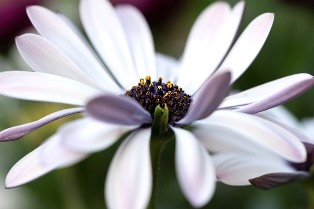
- Description: Daisies with white or yellow petals and a bright yellow center.
- Habitat: Native to the Canary Islands.
- Significance: Popular in gardens and as cut flowers.
Mandevilla
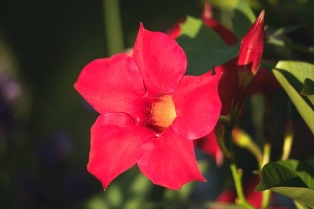
- Description: Tropical vines with large, trumpet-shaped flowers in red, pink, or white.
- Habitat: Native to Central and South America.
- Significance: Used for decorative purposes in gardens and patios.
Meadow Rue
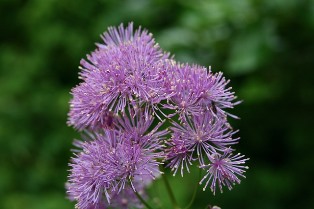
- Description: Delicate flowers with airy, plume-like clusters, often white or purple.
- Habitat: Found in temperate regions around the world.
- Significance: Adds a light, feathery texture to garden borders.
Maiden Pink

- Description: Small, pink flowers with fringed petals.
- Habitat: Native to Europe and Asia.
- Significance: Often used in rock gardens and as ground cover.
Marsh Marigold

- Description: Bright yellow, buttercup-like flowers that bloom in wet areas.
- Habitat: Found in Europe, Asia, and North America.
- Significance: Indicates the arrival of spring in wetland areas.
Mock Orange
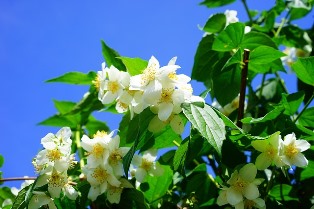
- Description: Fragrant white flowers resembling orange blossoms.
- Habitat: Native to Europe, Asia, and North America.
- Significance: Popular in gardens for its fragrance.
Maltese Cross
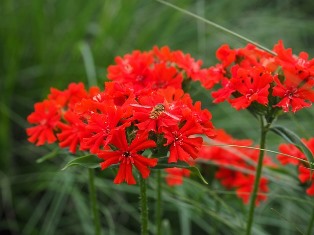
- Description: Bright red, cross-shaped flowers.
- Habitat: Native to Europe.
- Significance: Named for its resemblance to the Maltese cross emblem.
Meadowsweet

- Description: Creamy white, fragrant flowers in dense clusters.
- Habitat: Native to Europe and Asia.
- Significance: Used in traditional medicine and as a flavoring.
Mexican Hat

- Description: Unique flowers with drooping petals, usually red or yellow, and a tall central cone.
- Habitat: Native to the United States and Mexico.
- Significance: Attracts pollinators and adds a distinctive look to gardens.
Mountain Avens

- Description: White or yellow flowers with a simple, open structure.
- Habitat: Found in arctic and alpine regions.
- Significance: Adapted to harsh, cold environments.
Mahonia

- Description: Evergreen shrubs with yellow, spiky flowers and blue berries.
- Habitat: Native to North America and Asia.
- Significance: Used in landscaping for year-round interest.
Marshmallow Plant

- Description: Tall plants with pale pink flowers.
- Habitat: Native to Europe and western Asia.
- Significance: Source of the original marshmallow confection.
Marjoram

- Description: Small, white to pink flowers on a herbaceous plant.
- Habitat: Native to the Mediterranean region.
- Significance: Used as a culinary herb and in traditional medicine.
Monkshood

- Description: Tall spikes of blue or purple, hooded flowers.
- Habitat: Native to mountainous regions of Europe and Asia.
- Significance: Highly toxic, used historically in medicine and hunting.
Mexican Petunia

- Description: Purple, trumpet-shaped flowers that bloom profusely.
- Habitat: Native to Mexico and the Caribbean.
- Significance: Popular ornamental plant, attracts hummingbirds.
Moth Orchid

- Description: Elegant flowers resembling moths in flight, usually white, pink, or yellow.
- Habitat: Native to Southeast Asia and Australia.
- Significance: Commonly grown as houseplants and in floral arrangements.
Mayapple

- Description: White, waxy flowers under umbrella-like leaves, followed by yellow fruit.
- Habitat: Native to eastern North America.
- Significance: Fruit is edible when ripe, but the plant is otherwise toxic.
Million Bells

- Description: Small, petunia-like flowers in a variety of colors.
- Habitat: Cultivated worldwide.
- Significance: Popular in hanging baskets and containers for continuous blooms.
Marvel of Peru (Four o’Clock)

- Description: Brightly colored, trumpet-shaped flowers that open in late afternoon.
- Habitat: Native to South America.
- Significance: Attracts pollinators, blooms at a unique time of day.
Mouse Ear Hawkweed

- Description: Small, yellow flowers with hairy leaves.
- Habitat: Found in Europe and North America.
- Significance: Known for its resilience and ground-covering abilities.
Musk Mallow

- Description: Pale pink to white, hibiscus-like flowers with a musky scent.
- Habitat: Native to Europe and Asia.
- Significance: Used in traditional medicine and as an ornamental plant.
Montbretia

- Description: Bright orange, tubular flowers on arching stems.
- Habitat: Native to South Africa.
- Significance: Adds vibrant color to gardens, attracts hummingbirds.
Myosotis (Forget-Me-Not)
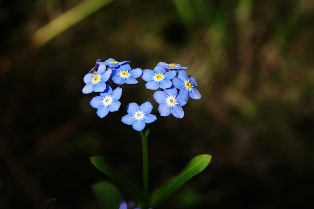
- Description: Small, blue flowers with yellow centers.
- Habitat: Native to temperate regions worldwide.
- Significance: Symbolizes remembrance and true love.
Milkweed
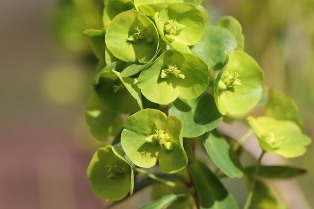
- Description: Clusters of pink, orange, or white flowers, crucial for monarch butterflies.
- Habitat: Native to North and South America.
- Significance: Vital for the life cycle of monarch butterflies.
Meadow Cranesbill

- Description: Purple or blue, five-petaled flowers with deeply cut leaves.
- Habitat: Native to Europe and Asia.
- Significance: Used in herbal medicine and ornamental gardening.
Mountain Phlox

- Description: Small, star-shaped flowers in pink, purple, or white.
- Habitat: Native to North America.
- Significance: Popular in rock gardens and alpine settings.
Moonwort

- Description: Fern-like plant with tiny, moon-shaped spores.
- Habitat: Found in temperate regions worldwide.
- Significance: Associated with folklore and mysticism.
Maranta

- Description: Tropical plants known for their striking leaf patterns.
- Habitat: Native to Central and South America.
- Significance: Popular as houseplants for their decorative foliage.
Melastoma
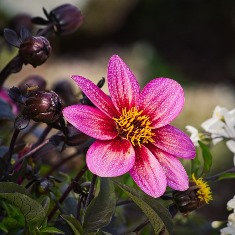
- Description: Showy, purple or pink flowers with prominent stamens.
- Habitat: Native to tropical Asia.
- Significance: Often found in tropical gardens and landscapes.
Melic Grass

- Description: Graceful, arching grass with feathery flower heads.
- Habitat: Found in temperate regions of Europe and Asia.
- Significance: Used in ornamental grasses and naturalistic gardens.
Mexican Primrose

- Description: Pink, cup-shaped flowers that open in the evening.
- Habitat: Native to Mexico and southwestern United States.
- Significance: Adds a splash of color to gardens, blooms prolifically.
Milkwort

- Description: Small, colorful flowers in shades of pink, blue, or white.
- Habitat: Found in Europe, Asia, and North America.
- Significance: Used in traditional medicine, attracts pollinators.
Montauk Daisy

- Description: Large, white daisy flowers with yellow centers.
- Habitat: Native to Japan.
- Significance: Known for its late-season blooms.
Moraea

- Description: Iris-like flowers in a variety of colors.
- Habitat: Native to South Africa.
- Significance: Often grown in gardens for their exotic appearance.
Moluccella (Bells of Ireland)
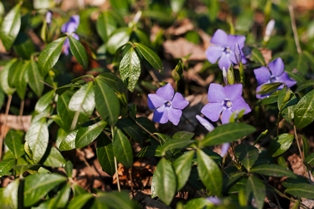
- Description: Tall spikes of green, bell-shaped flowers.
- Habitat: Native to the Mediterranean region.
- Significance: Popular in floral arrangements for their unique color and shape.
Melampodium

- Description: Bright yellow, daisy-like flowers.
- Habitat: Native to Central America.
- Significance: Known for its heat tolerance and continuous blooming.
Meadowfoam

- Description: White flowers with a yellow center, resembling a sea of foam.
- Habitat: Native to North America.
- Significance: Grown for its oil-rich seeds, used in cosmetics.
Macleaya (Plume Poppy)
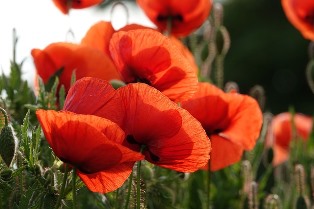
- Description: Tall plants with plume-like clusters of small, creamy flowers.
- Habitat: Native to Asia.
- Significance: Adds height and texture to garden borders.
Mazus

- Description: Low-growing plants with small, purple or blue flowers.
- Habitat: Found in Asia.
- Significance: Used as ground cover in moist, shaded areas.
Mikania

- Description: Vining plants with small, white to lavender flowers.
- Habitat: Native to the Americas.
- Significance: Known for its rapid growth and ability to cover structures.
Mimosa

- Description: Fern-like leaves and pink, fluffy flowers.
- Habitat: Native to tropical and subtropical regions.
- Significance: Symbolizes sensitivity and responsiveness.
Micromeria

- Description: Small, aromatic herbs with tiny flowers.
- Habitat: Found in Mediterranean regions.
- Significance: Used in cooking and traditional medicine.
Morina

- Description: Unusual flowers with spiky, tubular blooms, often pink or white.
- Habitat: Native to the Himalayas.
- Significance: Adds an exotic touch to gardens.
Mirabilis

- Description: Brightly colored flowers that bloom in late afternoon.
- Habitat: Native to South America.
- Significance: Known for its unique blooming time and vibrant colors.
Myosotis scorpioides (Water Forget-Me-Not)

- Description: Small, blue flowers with a yellow eye, found near water.
- Habitat: Native to Europe.
- Significance: Symbolizes remembrance and love.
Melianthus

- Description: Shrubs with serrated leaves and red, nectar-rich flowers.
- Habitat: Native to South Africa.
- Significance: Attracts birds and insects, used in traditional medicine.
Mitchella

- Description: Small, white flowers followed by red berries.
- Habitat: Native to North America.
- Significance: Known as partridge berry, used in herbal medicine.
Matricaria (Feverfew)

- Description: Small, daisy-like flowers with a strong aroma.
- Habitat: Native to Europe.
- Significance: Used in traditional medicine to treat fevers and migraines.
Madwort

- Description: Small, yellow or white flowers on low-growing plants.
- Habitat: Found in Europe and Asia.
- Significance: Used as ground cover and in rock gardens.
Mertensia (Bluebell)

- Description: Bell-shaped, blue flowers that hang in clusters.
- Habitat: Found in Europe and North America.
- Significance: Symbolizes humility and constancy.
Monarda (Bee Balm)

- Description: Brightly colored, tubular flowers that attract bees and butterflies.
- Habitat: Native to North America.
- Significance: Used in herbal medicine and as a culinary herb.
Melittis

- Description: Fragrant, pink and white flowers on herbaceous plants.
- Habitat: Native to Europe.
- Significance: Attracts pollinators, known for its sweet scent.
Manzanita

- Description: Evergreen shrubs with small, bell-shaped flowers and red bark.
- Habitat: Native to North America.
- Significance: Used in landscaping for its distinctive appearance.
Melaleuca

- Description: Shrubs or trees with papery bark and spiky flowers.
- Habitat: Native to Australia.
- Significance: Known for its essential oils and medicinal properties.
Monotropa
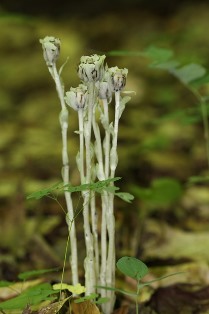
- Description: Ghostly white, parasitic plants without chlorophyll.
- Habitat: Found in temperate regions worldwide.
- Significance: Known as ghost plants, unique in their lack of photosynthesis.
Muehlenbeckia

- Description: Twining vines with small, greenish flowers.
- Habitat: Native to the Southern Hemisphere.
- Significance: Used for ground cover and erosion control.
Montia
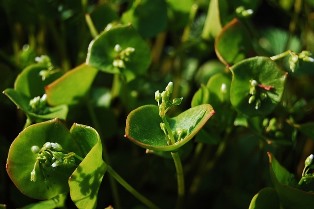
- Description: Small, pink or white flowers on succulent plants.
- Habitat: Found in North America.
- Significance: Often grown in rock gardens and alpine settings.
Myrrhis

- Description: Tall plants with feathery leaves and white, umbrella-shaped flowers.
- Habitat: Native to Europe.
- Significance: Known as sweet cicely, used in cooking and herbal medicine.
Mayweed

- Description: Daisies with white petals and a yellow center, often found in wild areas.
- Habitat: Native to Europe.
- Significance: Often considered a weed, but used in traditional medicine.
Malaxis

- Description: Small, green or yellow orchids with delicate flowers.
- Habitat: Found in tropical and temperate regions.
- Significance: Grown for their unique floral structures.
Maesa

- Description: Shrubs or small trees with small, white flowers.
- Habitat: Native to tropical regions.
- Significance: Used in traditional medicine and as ornamental plants.
Malus (Crabapple)

- Description: Flowering trees with pink or white blossoms, producing small, edible fruits.
- Habitat: Native to temperate regions.
- Significance: Used in orchards and for ornamental purposes.
Mertensia virginica (Virginia Bluebells)

- Description: Bell-shaped, blue flowers that bloom in early spring.
- Habitat: Native to eastern North America.
- Significance: Known for their early spring blooms, attracting pollinators.
Miscanthus
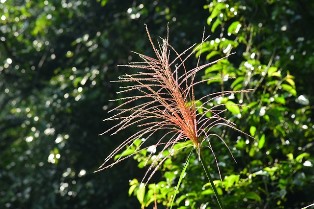
- Description: Tall grasses with feathery plumes.
- Habitat: Native to Asia.
- Significance: Used in ornamental gardening and for bioenergy production.
Molinia
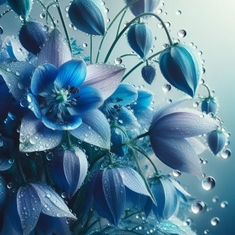
- Description: Graceful, clump-forming grasses with airy flower spikes.
- Habitat: Found in Europe and Asia.
- Significance: Adds movement and texture to gardens.
Molopospermum

- Description: Tall plants with yellow, umbrella-shaped flowers.
- Habitat: Found in Europe.
- Significance: Adds vertical interest to garden borders.
Moringa

- Description: Trees with small, white flowers and nutritious leaves.
- Habitat: Native to South Asia.
- Significance: Known as the “drumstick tree” for its edible pods, used in traditional medicine.
Morus (Mulberry)

- Description: Trees with small, green flowers and edible berries.
- Habitat: Found in temperate and subtropical regions.
- Significance: Grown for their fruit and as ornamental trees.
Muraltia

- Description: Small shrubs with pink or purple flowers.
- Habitat: Native to South Africa.
- Significance: Used in ornamental gardening.
Mutisia

- Description: Climbing plants with bright, daisy-like flowers.
- Habitat: Native to South America.
- Significance: Adds vibrant color and height to gardens.
Myrica
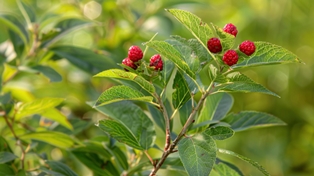
- Description: Shrubs or small trees with aromatic leaves and small flowers.
- Habitat: Found in temperate and subtropical regions.
- Significance: Used in traditional medicine and for ornamental purposes.
Myrsine
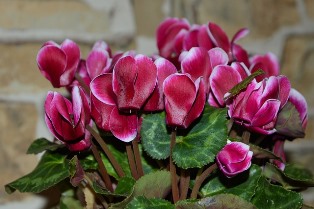
- Description: Small shrubs with small, white flowers and red berries.
- Habitat: Found in tropical and subtropical regions.
- Significance: Used in landscaping for their dense foliage.
Myosotidium

- Description: Large, blue flowers resembling forget-me-nots.
- Habitat: Native to New Zealand.
- Significance: Grown for their striking, large blooms.
Moluccella laevis (Bells of Ireland)

- Description: Tall spikes of green, bell-shaped flowers.
- Habitat: Native to the Mediterranean region.
- Significance: Popular in floral arrangements for their unique color and shape.
Melastomaceae

- Description: Family of tropical plants with showy, often purple flowers.
- Habitat: Found in tropical regions worldwide.
- Significance: Includes many ornamental species.
Maackia
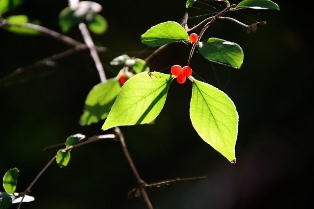
- Description: Trees with white or pink, pea-like flowers.
- Habitat: Native to East Asia.
- Significance: Used in landscaping for their attractive flowers and foliage.
Mitella

- Description: Small, delicate flowers on slender stems.
- Habitat: Found in temperate regions of Asia and North America.
- Significance: Adds a delicate touch to shaded gardens.
Muhlenbergia

- Description: Ornamental grasses with airy, pink or purple flower spikes.
- Habitat: Found in North and South America.
- Significance: Adds movement and color to landscapes.
Molucca Balm

- Description: Tall plants with green, bell-shaped flowers.
- Habitat: Native to the Mediterranean region.
- Significance: Known as Bells of Ireland, popular in floral arrangements.
Mirabilis jalapa (Four o’Clock)

- Description: Brightly colored flowers that open in late afternoon.
- Habitat: Native to South America.
- Significance: Known for its unique blooming time and vibrant colors.
Micranthes
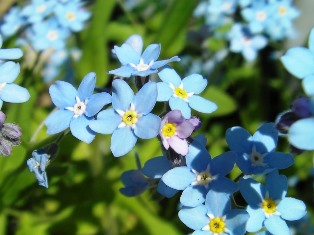
- Description: Small, white or pink flowers in dense clusters.
- Habitat: Found in temperate regions.
- Significance: Grown for their delicate, star-shaped flowers.
Montiopsis
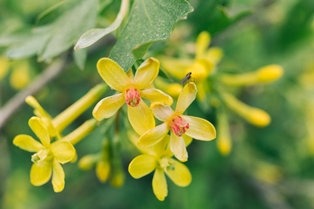
- Description: Small, pink or white flowers on succulent plants.
- Habitat: Native to South America.
- Significance: Often grown in rock gardens and alpine settings.
Moehringia

- Description: Small, white flowers on low-growing plants.
- Habitat: Found in Europe and Asia.
- Significance: Used as ground cover in gardens.
Murdannia

- Description: Small, blue or purple flowers on trailing plants.
- Habitat: Found in tropical and subtropical regions.
- Significance: Used in hanging baskets and as ground cover.
Myrtus (Myrtle)

- Description: Evergreen shrubs with small, white flowers and aromatic leaves.
- Habitat: Native to the Mediterranean region.
- Significance: Symbolizes love and immortality, used in landscaping.
Maianthemum

- Description: Small, white, star-shaped flowers followed by red berries.
- Habitat: Found in temperate regions of the Northern Hemisphere.
- Significance: Known as false lily of the valley, used in shaded gardens.

